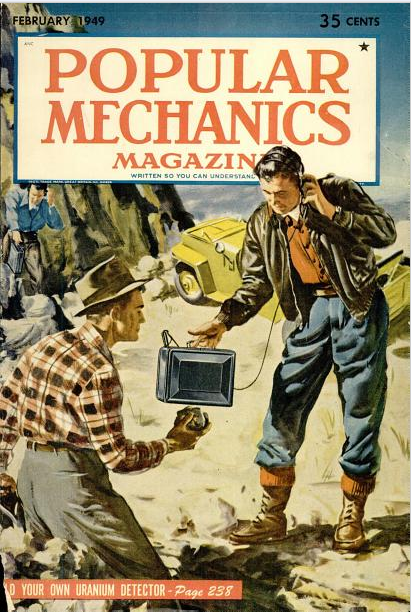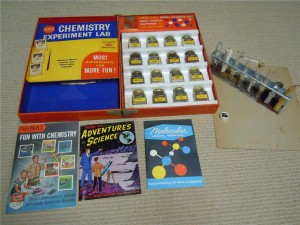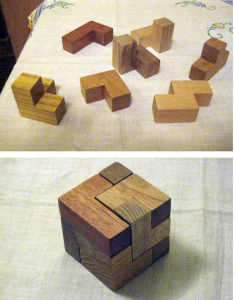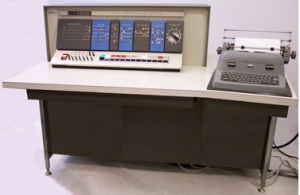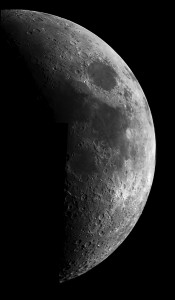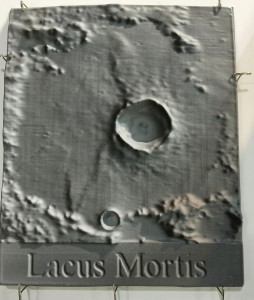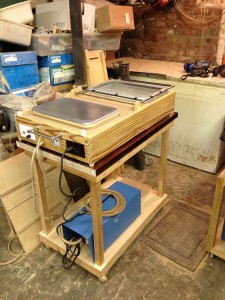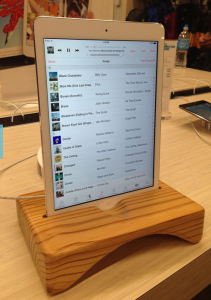I learned to read using Popular Mechanics.
My father had a subscription, and by the time I learned to read, there were a hundred back issues with the latest news in cars, airplanes, electronics, atomic power, and the exploration of space. I got a chemistry set for my 10th birthday, and had a lab under the basement stairs with a slop sink in the laundry room.
The basement was finished, with a large chalkboard and bench seating that ran around two sides of the room. My friends and I started a science club, and we moved the meetings from house to house.
I started making things from wood about the same time. Every issue of Popular Mechanics had lots of articles: Shop Hints, plans, how to use tools.
A few years later, I joined a science club at the Jewish Center where I learned electronics and Morse Code while studying for a Novice ham radio license: WN8NRP. My friend Stuart and I built our own radio transmitters from scratch, buying components from the Fairchild Electronics factory outlet a few blocks away and went on the air.
I had received a subscription to Scientific American for my Bar Mitzvah. In 1966, there was an article in the column Mathematical Games about Soma Cubes, a puzzle invented by Piet Hein. I showed it to my friend John and he made one piece by unfolding the shape and cutting it from cardboard. I made a set by cutting cubes on a table saw and gluing them together.
In high school I sold Soma Cubes to friends for 75 cents a set.
(these I made about five years ago; the sets in high school were made of pine and glued up from blocks)
John and I would collect the solutions people had made on 3 x 5 cards cut in half. We collected about a hundred different solutions.
I took a computer programming class in the 11th grade. Cass Technical High School had leased an IBM 1620 computer: it was used to take attendance, and I was in the second programming class offered. The computer had a Winchester; what we today call a hard drive. The Winchester was bigger than a 2-drawer file cabinet and had a clear cover; you could watch the arm move over the spinning disk.
I had a friend who lived down the street, David Lipson, who was really smart; he once asked me, “Why is the square root of two equal to the fourth root of four?”
I was elected president of the Math Club. I started working on David’s problem. My solution required raising a number to a power an infinite number of times, and decided to use the computer to do this. I went to a local IBM shop and explained what I wanted to do, and they gave me three manuals. I studied the manuals and wrote the program. The calculation took a long time: I rewrote the program to allow an interrupt, so I could go to the computer room first hour, punch the interim results to a card, and go to class second hour. The next day I’d load the program from the Winchester and read in the card. The calculations took 28 hours of computer time.
It turns out, for every number greater than one, there is a pair of nth roots. The only number without a pair is e, the base of the natural logarithms. Starting with the larger n, the program could calculate the smaller n.
With 2 the only integer between one and e, it was reasonable that it would have an integer dual: 4.
I wrote an algebraic proof of my results and discovery: the eth root of e is the largest value of the nth root of n. This became my science fair project, and I won a first prize at the 1968 Metropolitan Detroit Science Fair in the category Mathematics and Computers.
Forty years later, I discovered I’d solved Steiner’s Problem.
I attended Wayne State University to major in mathematics but left after three years to go to New York.
In New York I worked as a scenic carpenter, building sets and props for photographers and off-broadway productions. In addition, I built furniture for sale. In 1975, I got a contract to write a book for apartment dwellers who wanted to build their own furniture: this was published in 1977 under the title The Apartment Carpenter.
 (30 years on, still used in advertising at setshopwest.com)
(30 years on, still used in advertising at setshopwest.com)
After twelve years of professional woodworking, I left the scenic carpenter business and in 1986 became a Computer Operator at the Courant Institute of Mathematical Sciences, part of NYU. This was the same year the punch card readers were retired, and personal computer labs were opened. A few years later I was managing the computer labs, and gave weekly tutorials on computer topics to students and staff.
In 1995 the School of Continuing and Professional Studies hired me to teach Introduction to the Macintosh courses for their digital media department. I did this for two years. In 1996 (ten years before youtube) I produced and hosted 26 weekly half-hour television shows for public access called MacTalk where I explained how to use the Mac.
Unicycle Basics is a video where I explain how to ride a unicycle. It has had over 100,000 views.
I’ve been interested in Astronomy since reading The Golden Book of Stars and Planets. In 1999 I bought a good telescope, a Meade ETX-125 f/15 Maksutov-Cassegrain with go-to and tracking capability. After seeing the pictures of Mars after the 2003 opposition taken with computers and webcams, I got a webcam and started taking pictures of the moon. You can see more at finkh.wordpress.com. I am currently a member of the Amateur Astronomers Association and do sidewalk astronomy at various locations around New York City.
In 2008 I won Time Aloft at the New Millennium Paper Airplane Contest. Later that same year the Crane paper company (they make the paper for US currency) hired me to conduct a paper airplane contest in Pittsfield, Massachusetts. Many children did not know how to make paper airplanes, so I would show each one how to make a paper airplane. (I’d done this with a daycare class years earlier.)
In 2009 the Lunar Reconnaissance Orbiter was launched. One of the goals of the mission was to gather topographic data accurate to 10 meters for the entire surface of the Moon. NYU had recently purchased a 3D printer, so I decided to make models of the lunar surface using data from the LRO. I first built a kit CNC, then purchased a larger CNC router and started making molds.
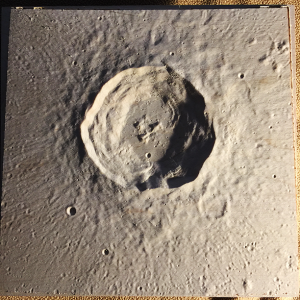 Wooden model of Harpalus Crater 10″ square.
Wooden model of Harpalus Crater 10″ square.
These were then duplicated on a vacuform machine I had built to make copies. The shading you see is applied with an airbrush. I attended the 2015 Lunar and Planetary Science Conference as a vendor.
In 2010, I turned 60. My mother and sisters got me an iPad, which had been released a month earlier. I wanted to build a stand so I could read lying down. I put a hole in the stand to hear the music, and it amplified the sound. A professor I had helped with Mathematica programming suggested there would be a better acoustic match if I used a megaphone. The result was the Sounder. I sold about 300 on etsy, until the landlord decided not to allow any more woodworking in the basement.
My friend Jeff and I decided to build canoes to celebrate the Millennium. We started in 1999, finished in 2011. He built a stitch-and-glue from a kit, and I started from scratch. After my dad passed away and we cleaned out the basement, there was a pile of two to four foot planks of redwood left that I took to New York. I cut the wood into strips and scarfed the strips end-to-end to make twelve footers. Most strippers mill the edges bead-and-cove and glue them together over a form. By the time they reach the bottom of the canoe, the strips need to be bent quite a bit. I decided to taper all the strips so they were 1/2″ at the ends and full width in the middle, so the strips would remain parallel, which worked out perfectly.
Wee Lassie style homebuilt canoe launched May, 2011, Pine Barrens, NJ.
I was employed as a Computer Analyst at the NYU IT Service Desk for about 30 years, and retired in 2016. I’m now a member of Fat Cat Fab Lab, a makerspace in Greenwich Village, where I teach CNC Basic Usage and Safety.
